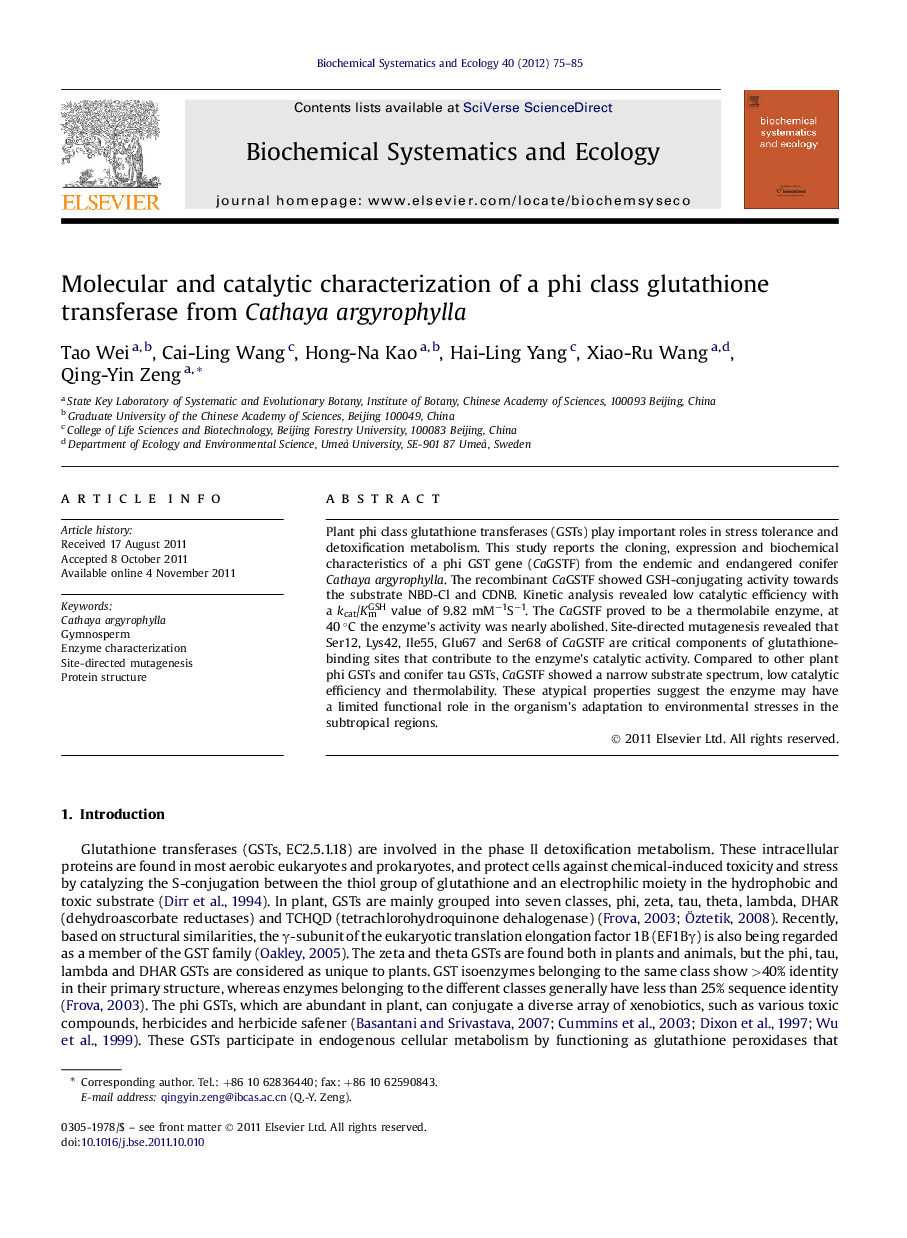| Article ID | Journal | Published Year | Pages | File Type |
|---|---|---|---|---|
| 1351850 | Biochemical Systematics and Ecology | 2012 | 11 Pages |
Plant phi class glutathione transferases (GSTs) play important roles in stress tolerance and detoxification metabolism. This study reports the cloning, expression and biochemical characteristics of a phi GST gene (CaGSTF) from the endemic and endangered conifer Cathaya argyrophylla. The recombinant CaGSTF showed GSH-conjugating activity towards the substrate NBD-Cl and CDNB. Kinetic analysis revealed low catalytic efficiency with a kcat/KmGSH value of 9.82 mM−1S−1. The CaGSTF proved to be a thermolabile enzyme, at 40 °C the enzyme’s activity was nearly abolished. Site-directed mutagenesis revealed that Ser12, Lys42, Ile55, Glu67 and Ser68 of CaGSTF are critical components of glutathione-binding sites that contribute to the enzyme’s catalytic activity. Compared to other plant phi GSTs and conifer tau GSTs, CaGSTF showed a narrow substrate spectrum, low catalytic efficiency and thermolability. These atypical properties suggest the enzyme may have a limited functional role in the organism’s adaptation to environmental stresses in the subtropical regions.
► We cloned a new phi class GST (CaGSTF) from the endangered conifer Cathaya argyrophylla. ► The CaGSTF showed a narrow substrate spectrum, low catalytic efficiency and thermolability. ► Ser12, Lys42, Ile55, Glu67 and Ser68 of CaGSTF were identified as glutathione-binding residues. ► Glutathione-binding residues of CaGSTF are critical for the enzyme’s catalytic activity.
